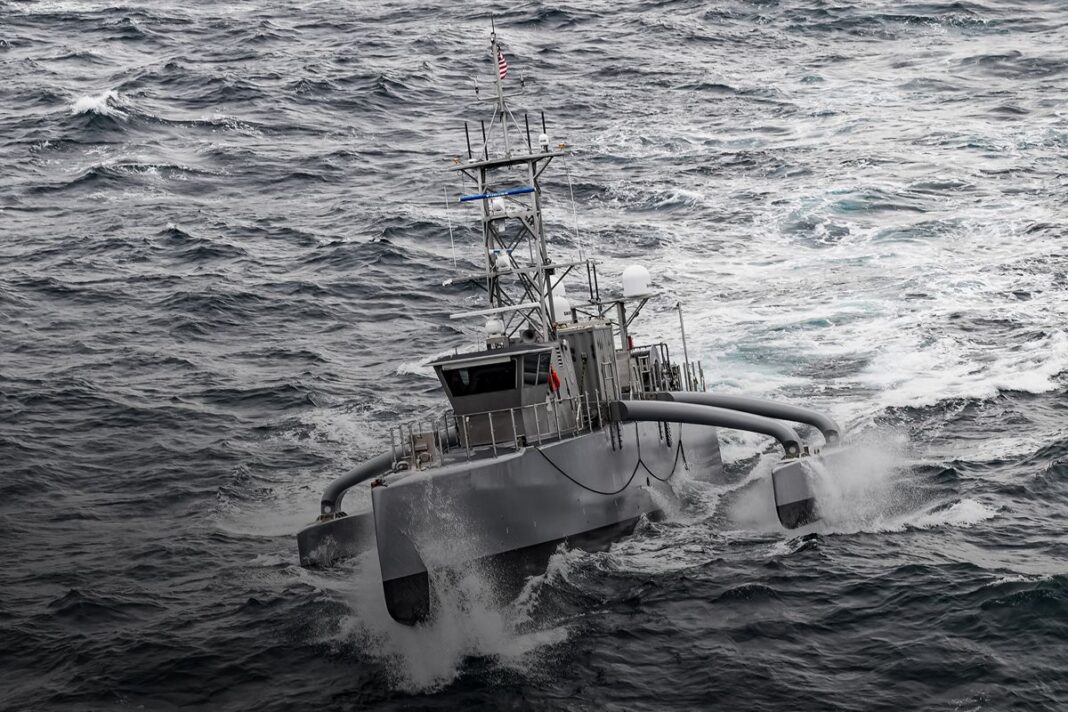The Navy’s new drone attack boat program could be a key part of U.S. strategy to counter China’s battle strategy in the Indo-Pacific.
As U.S. military planners and policymakers continue to develop strategies for a potential conflict with China, the U.S. Navy has taken steps to develop a family of highly adaptable drone attack boats.
In July, the Navy released a solicitation for its modular attack surface craft (MASC) program. The accompanying program documents describe a potential family of unmanned vessels that could deploy with a variety of weapons and specialized gear that would all fit into standardized shipping containers.
The new drone boat program comes at a time when U.S. shipyard output is falling behind China’s and when U.S. planners have been troubled by the results of war games studying conflict scenarios with Beijing.
These drone attack boats could serve as a workhorse in an Indo-Pacific conflict and help address some of the challenges U.S. military planners face in the region.
The program documents state that the Navy is seeking a “non-exquisite solution” for up to three different vessel variants, ranging in size and payload.
The Navy is also looking for solutions that are easily repairable at facilities around the world, with a preference for designs that are compliant with arms export regulations. Such design characteristics suggest the United States is seeking a solution that could become ubiquitous across a network of allies and partners.
A Navy spokesperson told The Epoch Times via email that this adoption of standardized containers means the drone attack boat could be “rapidly reconfigured to meet different operational needs.”
One of these drone boats could potentially move from a surveillance role to a combat role, all with a change of the standardized containers it carries.
Along with being highly standardized and accessible to allied users, the Navy wants a vessel it can start making quickly. Among the service’s top-listed priorities is to begin fielding vessels within 18 months of granting an award for a prototype.
Of the three potential drone-boat variants, the first vessel the Navy is seeking is a MASC that could potentially carry at least two standardized 40-foot equivalent unit (FEU) containerized payloads, each weighing 36.3 metric tons and requiring up to 75 kilowatts of power.
The Navy is also looking for a high-capacity MASC variant, capable of carrying a minimum of four FEUs, each of which weighs up to 36.3 metric tons and requires up to 50 kilowatts of power.
A request for a smaller third option, a single payload MASC, calls for a boat that could carry a single 20-foot equivalent unit containerized payload weighing up to 24 metric tons and consuming up to 75 kilowatts of power.
By Ryan Morgan








